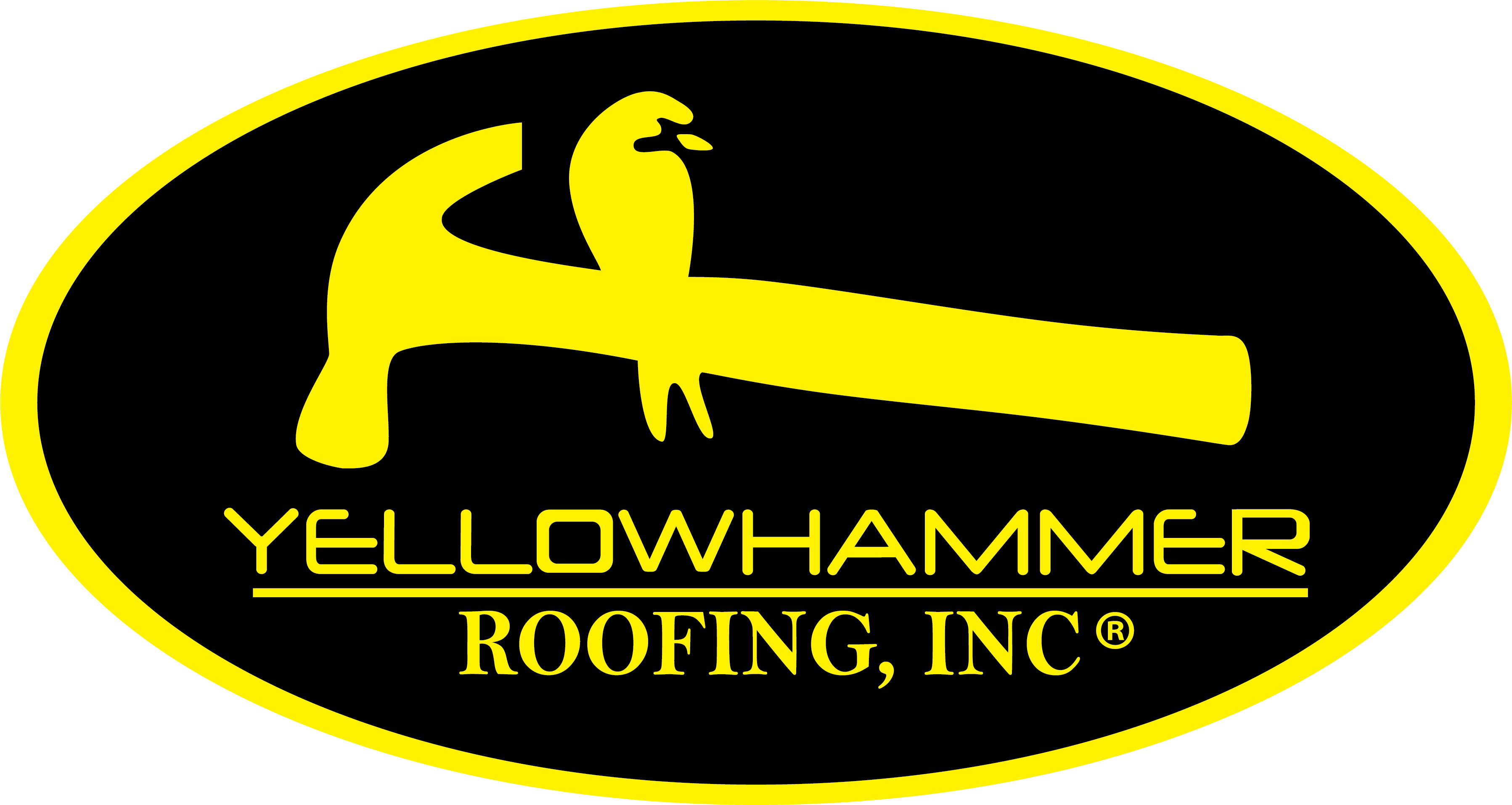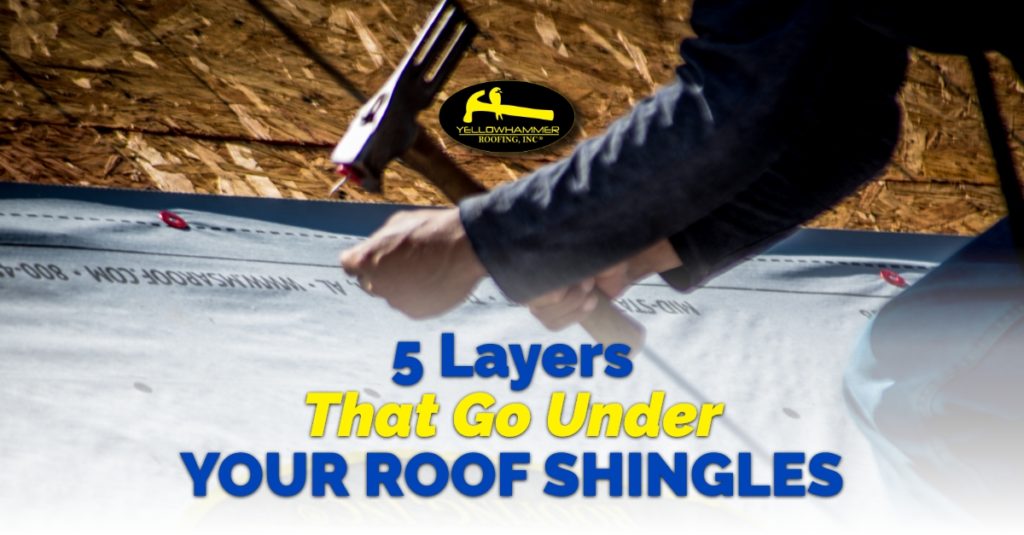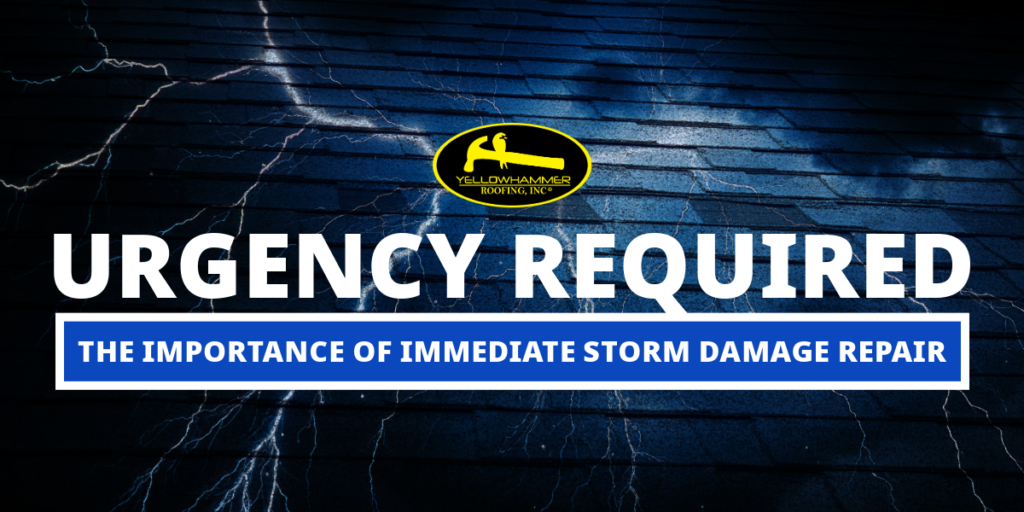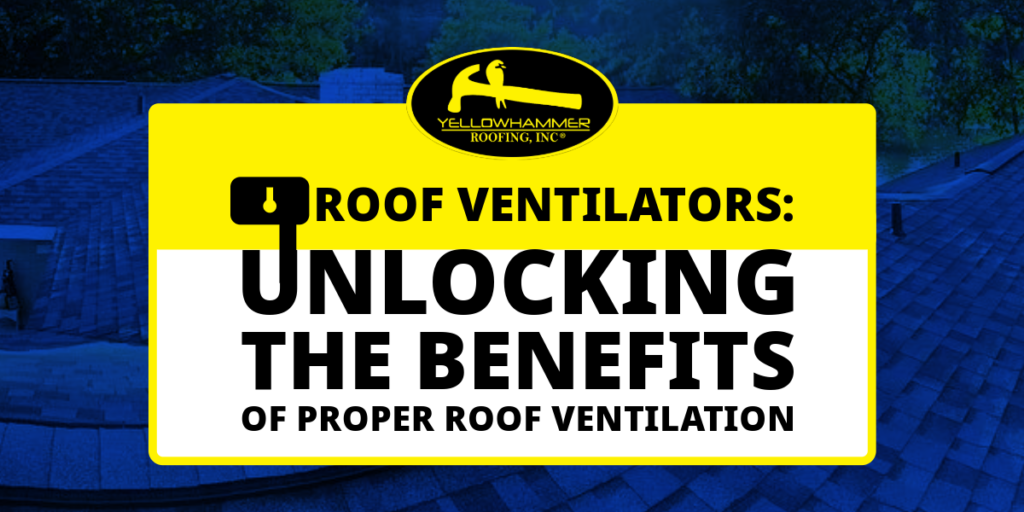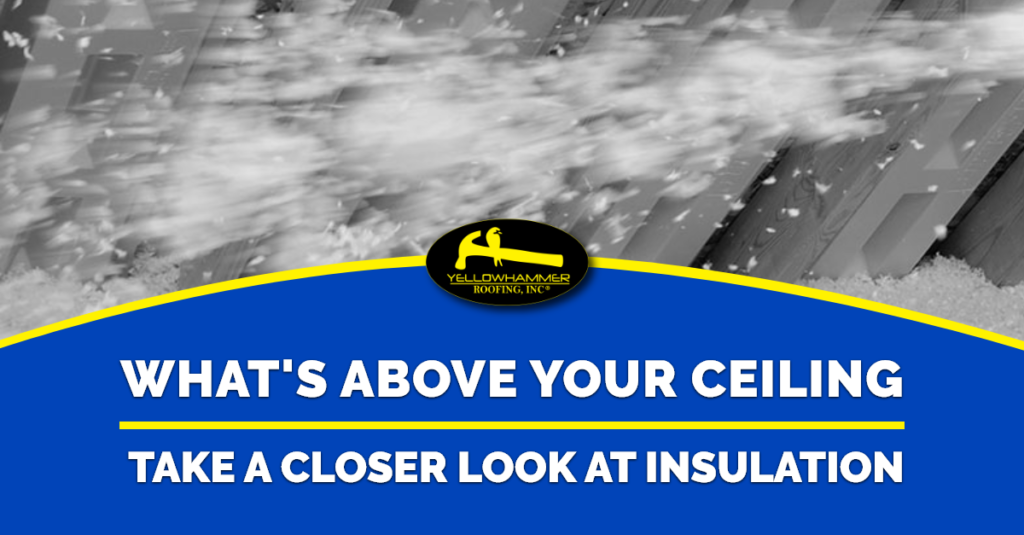Though it looks like one solid piece sitting atop your Alabama home, your roof is really an integrated system of parts. You might see shingles, but have you ever wondered what goes under roof shingles? Consider these five additional components you cannot see but help your roof protect your home.
1. Insulation
Inside your home’s attic, insulation helps separate attic air from the air in your living space. Attic air should match the outside air in both temperature and humidity levels. The attic insulation may be seen between joists as either paper-backed, rolled batts or as fluffy, blown-in insulation.
You do not have enough insulation if you can see your home’s joists when you crawl about in your attic. Talk with your roofer or insulation contractor about the right amount of insulation you need for our geographic and climate area.
In addition to blown-in insulation such as AttiCat® Expanding Blown-In insulation, some homeowners install radiant barrier insulation against the underside of the sheathing. Your roofer can make helpful recommendations about weatherstripping, caulking, and other money-saving insulation ideas.
2. Ventilation
While checking on your insulation in the attic, look up and down. If you can see a faint light at the peak of your roof and at its lower edge, your ventilation is performing adequately. A common problem with do-it-yourselfers is packing too much insulation into the narrow eave ends of your roof’s rafters, choking the soffit vents. This results in no light seeping up through those vents, indicating no airflow.
Ventilation is essential to a healthy roof. Your Alabama home should have one of three types of attic ventilation:
- Soffit vents with ridge vents
- Gable vents
- Powered vents
A properly ventilated attic helps your roof last longer as rising air enters through the soffit vents and hot air passes out the ridge vents, keeping temperatures in check. This reduces thermal expansion on your roof and drives humidity out of the confined attic space.
3. Roof Deck
The roof deck comprises two parts:
- Rafters—those angled 2×6 or 2×8 boards
- Sheathing—the sheets of plywood or oriented strand board (OSB) lying across the rafters
Together, these foundation layers support the rest of your roof. Rafters may seem simple, but they can have many configurations. The rafters create the pitch, or angle, of your roof. Rafters make interesting roof arrangements such as dormers, mansard, hipped, Dutch gable, and gambrel roofs. When built on-site, rafters involve a lot of complex mathematics and sophisticated cutting for a precise fit.
That precise fit may have been sacrificed if your home was built hastily or as part of a fast-rising development. Your roofer should check the integrity and connections of all your rafters as part of the annual inspection. Rotten rafters can be replaced or sistered for added strength during complete roof replacement.
Sheathing is purposely installed with slight gaps around each sheet to allow the material to expand and contract. If, from inside your attic, you can see light from the sheathing, you have a potential leak.
As with rafters, a roofer will replace bad sections of sheathing during complete roof replacement.
4. Underlayment
Shingles are not waterproof; they are water resistant. They shed water down into your gutters. Beneath the shingles, long, wide rolls of underlayment provide a waterproof seal against the thousands of tiny nail and staple holes used to attach your roof.
Underlayment is either natural or synthetic felt rolled out over the sheathing before shingles (or metal roofing panels) are installed. It seals around each nail driven through it into the sheathing. It prevents most water from infiltrating your attic.
Most roofers will remove the underlayment and replace it with modern material during a complete roof replacement. Synthetic felts are often recommended for their superior waterproofing qualities.
5. Water and Ice Shield
Slightly thicker than underlayment and also self-adhesive, an ice and water shield is installed by conscientious roofers across the bottom three feet of all roof areas. It is also commonly installed in valleys and across hips.
Because water and ice shield is thicker than underlayment, it does a better job sealing around holes in areas where water infiltration risk is high. Water can slip into your attic at valleys, where hips are formed by rising roof sections and along the eaves. Though Alabama does not get much freezing weather, an ice and water shield is an economical armor against ice dams forming along the roof’s lower edge.
Unless your home’s ice and water shield is defective, your roofer will likely leave the existing material in place during complete roof replacement.
Yellowhammer Roofing in Birmingham, Alabama, stands ready to help you with all aspects of roofing for your home. We provide complete roof repairs, full roof replacement, and more. Contact us today to find out what we can do for you.

